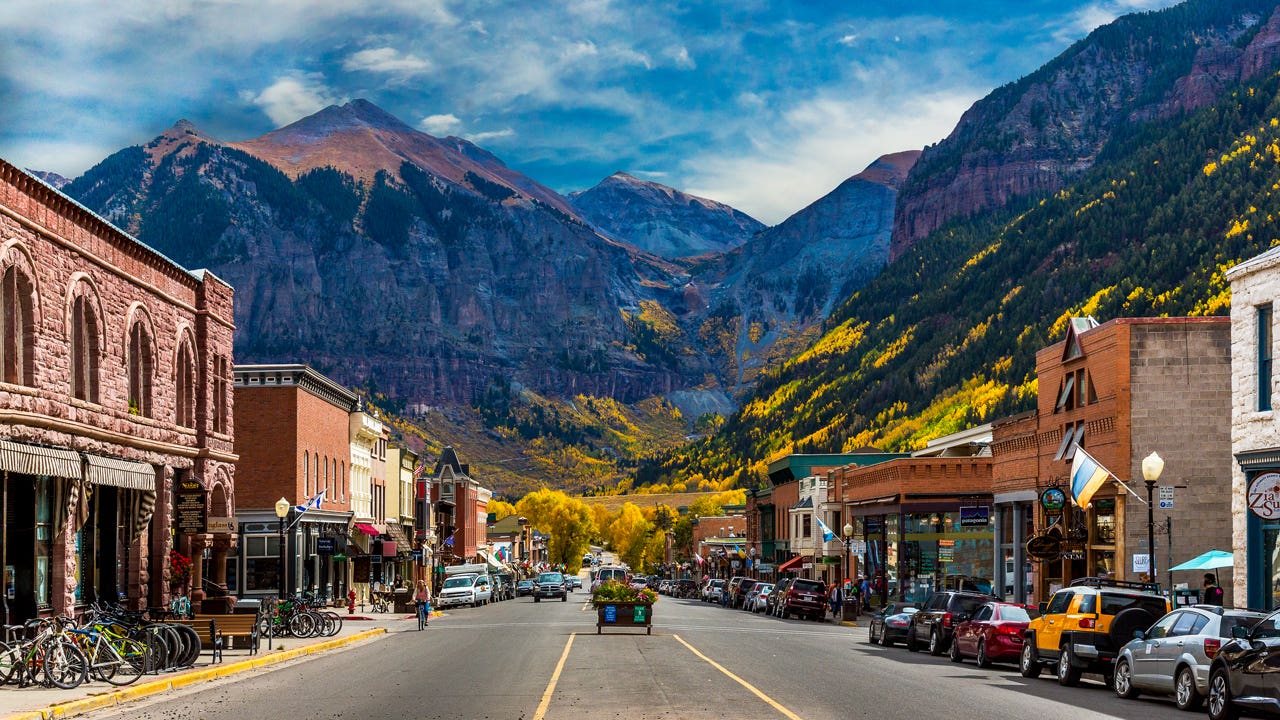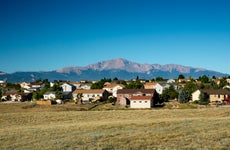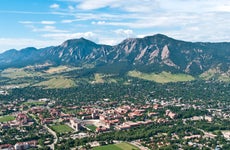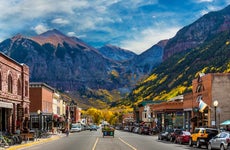Cost of living in Colorado 2023

The Bankrate promise
At Bankrate we strive to help you make smarter financial decisions. While we adhere to strict , this post may contain references to products from our partners. Here's an explanation for .
With its healthy, outdoorsy lifestyle and natural beauty, including the legendary Rocky Mountains, Colorado attracts a steady stream of new residents each year. It is one of the fastest-growing states in the country, according to the Pew Charitable Trust: Colorado’s population rose by 1.39 percent each year between 2010 and 2020.
But the state’s quality of life comes at a steep price. The overall cost of living in Colorado is 12 percent higher than the national average and that figure increases annually, according to Colorado’s Office of Economic Development and International Trade.
Colorado’s best places to live
The best locations to live in the state really depend on what you’re looking for. Many newcomers choose to settle along what’s known as the Front Range, a mountain range running from southern Wyoming to central Colorado. Some of the state’s biggest cities are found along the range, including Denver and Boulder, as well as many small, colorful mountain towns. Because the mountains block more severe weather patterns, a moderate climate characterizes life along the Front Range, making the cities easy places to live as well as work.
Still others choose to live a more rural life and opt for Colorado’s high plains, which state residents refer to as the Eastern Plains region.
What’s the average cost of living in Colorado?
Colorado is not an inexpensive place to call home. The cost of living overall may be 12 percent higher than the national average, but the exact figure may vary depending on where in the state you choose to settle. Not surprisingly, city living is much pricier than rural areas. In Colorado Springs, living costs are 6 percent more than the national average, while Denver is 12 percent more. In cities like Grand Junction and Pueblo however, living costs are less than the national average — at 1 percent and 6 percent cheaper respectively.
Housing costs: owning vs renting
Housing costs in Colorado are 15 percent above the national average. Buying a home specifically can be daunting: The price of a single-family home in Colorado averaged a steep $677,793 in September 2022, according to the Colorado Association of REALTORS most recent housing report. And even as real estate markets around the country begin to cool, home prices in Colorado are not expected to decline much in 2022 or 2023. The state continues to be a hotspot for both buying and selling homes, and it remains a seller’s market: buyers outnumber the houses available for purchase.
Rental costs vary significantly throughout the Centennial State,. But, like many other parts of the country, have been steadily ticking upward, according to Apartment List, an online marketplace for U.S. apartment listings. Boulder is the most expensive place to be a renter with the average one-bedroom listing for about $1,664 per month, while the average cost of a two bedroom is about $2,119. At the other end of the spectrum, a one-bedroom in Colorado Springs will run you about $1,137 on average and a two-bedroom is $1,443.
Utility costs
It is possible to score some savings on utility costs in Colorado, which are 11 percent lower than national averages. However, Apartment List points out that a significant part of the state is located at a high elevation, which results in significant temperature variations. This can make it difficult to estimate typical utility costs.
Still, average monthly utility bills in Colorado remain well below national averages. Across the country, the average bill is $240 for electricity, gas and water, while in Denver, bills average about $142 per month.
Grocery costs
As the country struggles with the impacts of inflation, particularly when it comes to the cost of food, Colorado may offer a little reprieve. Grocery costs in the state are about 2 percent less than the national average.
Transportation costs
It’s a spread-out state, so Colorado residents spend about 6 percent more than the national average on transportation-related costs. The MIT living wage calculator estimates that annual transportation costs for a single adult in Colorado are about $4,938; for an adult with one child or a childless, two-adult household that cost jumps to $8,762.
While there is public transportation in places like downtown Denver, in most other places you’ll need a car to get around.
Taxes: income, sales and property
Colorado has a flat 4.55 percent state individual income tax rate and corporate tax rate, according to the Tax Foundation. There are also some locations throughout the state that collect local income taxes.
The sales tax rate in the state is 2.9 percent and the max local sales tax is 8.3 percent. On average, the combined state and local sales tax rate is about 7.77 percent.
Colorado has one of the lowest property tax rates in the nation. The average property tax in Colorado is 0.6 percent of a property’s assessed fair market value per tax year. On a home worth the median of $237,800 that translates to a property tax bill of about $1,437 annually. The state ranks 30 out of 50 in the nation for its tax rate, according to TaxRates.org.
Job market: unemployment rate
If you’re a job seeker, Colorado is the place to be. By some estimates, there are twice as many openings as unemployed individuals in the state. Since the start of 2022, the state has added in excess of 50,000 new jobs, according to the Bureau of Labor Statistics. The unemployment in Colorado rate sits at about 3.3 percent.
Looked at another way, Colorado has the second highest labor force participation rate in the nation at 69.7 percent as of August 2022, according to the Federal Reserve Bank.
Ready to move to Colorado?
Making a move to a new state takes some planning and Colorado is no exception. There are many different options and styles of living throughout the state, from small mountain towns to big, cosmopolitan cities to family-friendly suburbs.
Finding a local real estate agent who can help you explore the options and find an area that makes the most sense for your needs is a good first step.
FAQs
-
The cost of living in Colorado in general is 12 percent higher than the national average. However that figure can vary significantly depending on where in the state you decide to settle. Colorado’s living options range from small mountain towns to rural communities to big cities. And while the cost of living in general is more expensive here, specific expenses, such as utilities and food, are less than national averages.
-
The average home value in Colorado as of 2020 was $369,600, according to the 2020 U.S. Census. Of course, that doesn’t reflect the rapid inflation of the pandemic years. As of August 2022, the median home value is $577,500, according to the Zillow Home Values Index.
-
According to MIT’s living wage calculator, a single adult with no children would need to earn $19.16 an hour to have a living wage, while a living wage for an adult with one child is around $37.49 per hour. The hourly living wage for a household with two adults, both of whom are working, is $14.58 per hour. The living wage calculator is based on the assumption that the individuals are working full-time.
In general, your income should be at least three times the amount of your monthly mortgage or rent payment in order to live comfortably. For example, if you’re a renter in Denver, where the average one-bedroom costs $1,483 per month, you would need a monthly salary of at least $4,449.
Related Articles



